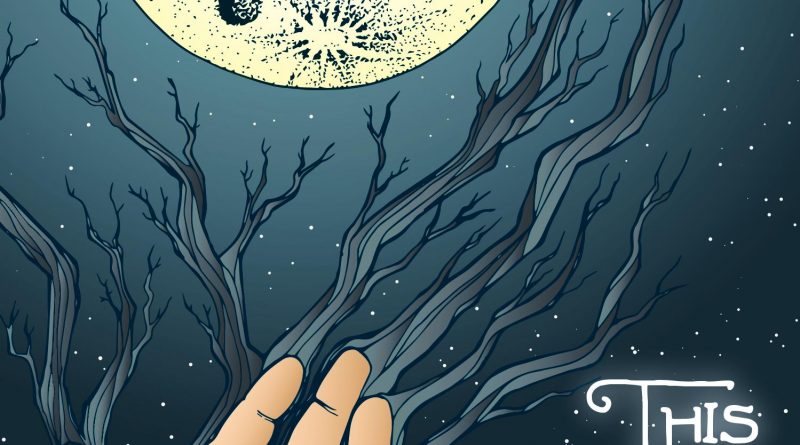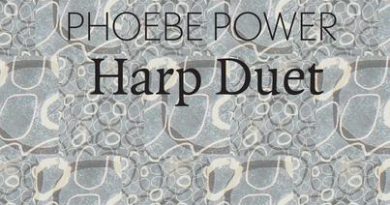This Night’s Forest by Wren Hex
– Reviewed by Deirdre Hines –
The hallucinogenic poems of This Night’s Forest re-imagine and re-represent the stories that underpin our culture. Culture can be read as many things, not least as the stories we tell each other to make sense of our lives. The truism that posits that one can learn about a culture if one listens to its stories has another side: if you want to change a culture, change its stories. Transformation has been a poetic motif since Ovid, but Wren Hex unties the threads that have underlain the dominant metaphors of the contemporary world in order to weave new metaphors into a reimagined social structure. This made this collection all the more exciting for me. Take the opening poem ‘thread’, and its opening line :
…..spiders weave a singing house
cables wrist-thick…
Textiles have been associated, in several cultures’ mythologies, with spiders, but Hex’s spiders are more technology than organism. In their weaving of ‘our bodies’, Hex alludes to ‘118 variations’. One finds 118 elements sorted by percent of appearance in the human body, starting with oxygen.
These variations are unlocked by our ‘repetitive acquiescence’ into a ‘proprietary design’. In the third verse, we are invited to ‘see fig.1. the spindle turns/ as the spinster carves/ indecipherable language/ into her skin..’ The spindle, essential to weaving, is recognizable as an emblem of security and settled times, but in Hex’s hands, nothing is quite as certain as the uncertainty of constructed identity. In the 1300s, when the word spinster was first used, it described an unmarried woman, whose occupation was spinning thread or yarn, and it is to this original meaning that Hex refers. It is a clever insertion in a poem that follows the thread of time back through echoes of creation myths depicting a spinster spider, injecting us with ‘shuddering binary’. The nodes of the ‘you’ that the poet searches for at the end of this twenty lined poem are ‘without names or histories’.
This stunning last line sets the tone for what is to follow, and allows a re-imagining of time. All of the poems in this collection are deliberately titled in the lower case, as is every ‘I’. This allows Hex to create a less structured, more free-form style, existing independently of grammatical, syntactical rules and ideologies. Capitalization is used to denote ‘proper’ names, but such classifications belong to an outmoded order. Take for example the name which the poet adopts: Wren Hex. The wren was sacred to Celtic druids, and to the Welsh poet-magician Taliesin. The wren is also a portent of fairy encounters, and sometimes a fairy in disguise. The noun ‘hex’, meaning ‘magic spell’, was first recorded in 1909, but in earlier times it meant ‘a witch’ (1856), or ‘to practice witchcraft’ (1830). This fractured blend of naming allows new meanings to be inferred from the stories underpinning the poet’s name, with each new poem we read. The child that births ‘slick furred things’ in ‘conjurors’ also births ‘a snarling beast/ straggly fur/ hyena ears/ quick teeth/ nothing to redeem it’, in the service lift in the second section of the poem. Such creations can be read as a metaphor for a new type of poem, a poem that no one can make her pretend is beautiful. Yet for all that, beauty prevails, albeit in a landscape that is clogged with steel, beating sewing machines and warehouses.
Spindles, needles, threads and stitching are ever present in these poems. In the dystopian ‘snide’, Hex asks who has not returned to an empty room to find their lover transformed ‘ to a handful of bright thread’. The coats we wear when we walk ‘ are heavy/ with stitched bodies’. This is such an original take on heartache it took my breath away. In ‘spell’, the mother who creates girls by stitch, and the father who presses steel to needle stems, portrays a totally new sexual act. The poet dreams of people ‘sleeping folded like/ pop-up book creatures’ in a world that ‘is stitched up’. There is a fable-like quality to the lines of many of poems, but the terror and violence that shadows the fairy tale is never far away. This is particularly apparent in ‘spindle’, which opens with:
every fairy tale
is a spell of protection
in disguise….
The whole nightmarish gamut of industrial existence is likened to the proverbial sewing machine beating out our days and years. The inhabitants of this world are lulled by ‘tv light’ into a soporific sleep, but then the poem reinvents origin myths in seven italicized lines which are worth quoting in full, not least for their inventiveness, but also because the imagination has become almost a byword of derision in many quarters, to the detriment of the poetic line.
some entered rivers,
became the stones and the weeds.
some crawled into basements,
were the dark and mice behind doors.
some sought out the soft ground
to spend their bodies
to the flowers and the roots.
The poet says this is the only spell they have ever learned. It is armour against Armageddon, and will hold the reader and the poet safe until a ‘lazy gardener’ cuts you awake and this ancient knowledge is forgotten. This juxtaposing of the technological and the mythic landscape creates a new way to understand our surrounding universe, which is exactly what science tries to do.
The science of myth pervades the last poem of this collection, ‘until waking’. The moon of this night’s forest is born from bone and pelt. Witnessing a burying of female identity, it tires of the binary pull of earth and sea and drifts away. There is no way back to the primitive binary code. This Night’s Forest is worth every line.





